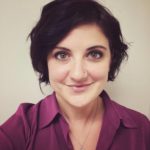Sleeping Pill Statistics
Millions of Americans use sleeping pills, leading to risks of dependence and overdose. Statistics show the prevalence of use and the dangers associated with misuse.
Battling addiction & ready for help?
Overall Sleep Medication Addiction Statistics
Sleep aids are some of the most commonly prescribed drugs in the United States, but their frequent use comes with serious risks. While these medications can help people manage insomnia or other sleep issues, they also carry a high potential for misuse, dependence, and addiction. Understanding how widespread this problem is can help highlight why careful prescription practices—and awareness—are so important.
Sleep aids can include:
- Benzodiazepines, such as diazepam (Valium), clonazepam (Klonopin), and alprazolam (Xanax)
- Z-drugs, like zolpidem (Ambien), eszopiclone (Lunesta), and zaleplon (Sonata)
- Sedatives and minor tranquilizers, which includes meprobamate, and chloral hydrate
- Barbiturates, like methylphenobarbital (Prominal), phenobarbital (Luminal), pentobarbital sodium (Nembutal)
- Hypnotics, such as suvorexant (Belsomra), ramelteon (Rozerem)
- Certain antidepressants used for their sedative effects, such as trazodone, mirtazapine, doxepin
Because of their addictive potential and dangerous side effects, these medications should always be used exactly as prescribed.
Still, misuse is common. Many people take more than the prescribed dose, use the drugs for longer than directed, or take someone else’s prescription—sometimes to sleep better, manage anxiety, or experience a high.
-
Daily use of sleep meds is common; about 8.5% of adults report taking them every day, especially older adults.
-
From 2022–23, z‑drug misuse stood at around 9% among users—showing these non‑benzodiazepine sleep aids still pose serious risks.
-
About 0.16% of Americans (2.2 million people) meet criteria for a sedative/hypnotic use disorder, including both z‑drugs and older sedatives.
-
In 2020, 343,000 people started misusing prescription sedatives for the first time, which means that even less-common sleep medications can be a source of misuse even for first-timers.
Sleeping Pill Overdose Statistics
Sleep medication can be dangerous. It’s rare to die of an overdose from using sleep medication alone. However, many people overdose while using sleep medication with other drugs.
- 899 people ages 15–24 died from an overdose of an antidepressant prescription drug in 2018.
- 16% of overdose deaths involving opioids also involved benzodiazepines in 2019.
- 9,711 people died of a benzodiazepine-related overdose in 2019.
Sleep Medication Abuse Statistics by Age
People of all ages misuse sleeping pills. While some people misuse sleeping pills to try to sleep better, others misuse them to get high.
Young people ages 18-25 have some of the highest rates of sleep medicine misuse. However, sleeping pill misuse has also become a huge issue among older and elderly adults.
People ages 65 and older commonly have issues sleeping and require sleep medication prescriptions. Many of these older people end up dependent on sleep medication, and some of them misuse their prescriptions.
Misuse of Sedatives and Tranquilizers: Age Group Comparison (NSDUH 2022 vs 2019)
| Age Group | Sedative / Tranquilizer Misuse (2019) | Sedative / Tranquilizer Misuse (2022) |
| 12-17 | 8% | 0.5% |
| 18-25 | 2% | 2.4% |
| 26+ | 9% | 1.7% |
Misuse of Sleep Medication by Older Adults
- In 2011, there were 290 drug-related emergency visits made by adults ages 65 and older involving illegal drug use, including misuse of prescription drugs. Benzodiazepine misuse was the second most common reason for these visits.
- 48 out of 290 illegal drug-related Emergency Department visits by older adults were for benzodiazepine misuse.
- 4% of the nation’s elders use central nervous system depressants (including sleep medications).
- 20-50% of women over age 60 are prescribed benzodiazepines.
- Somewhere between 9% to 54% of older adults have taken benzodiazepines in the past year.
Treatment Statistics, Types, and How to Get Help
Sleep medication addiction rehab varies but includes detoxification and counseling programs.
Since many different types of drugs are used to help people sleep, there are various addiction rehab programs.
Tranquilizer (Including Benzodiazepines) Addiction Treatment Statistics from 2015
- 14,217 people were admitted to treatment programs for abusing tranquilizers; they made up 0.9% of treatment program admissions.
- 8% of people admitted for abusing tranquilizers received ambulatory/outpatient treatment.
- 8% received residential/inpatient treatment.
- 4% received 24-hour detoxification treatment.
Sedative/Hypnotics (Including Barbiturates) Addiction Treatment Statistics from 2015
- 2,801 people were admitted to treatment programs for abusing sedatives. They made up 0.2% of treatment program admissions.
- 8% of people admitted for abusing tranquilizers received ambulatory/outpatient treatment.
- 6% received residential/inpatient treatment.
- 6% received 24-hour detoxification treatment.
Sleep medication addiction treatment varies by type of drug and severity of the addiction.
Sleeping pill addiction impacts individuals across various age groups, with significant misuse and overdose risks when combined with other substances. As these medications are commonly prescribed for sleep disorders, it’s crucial to be aware of their potential for dependency.
The statistics highlight that while many misuse these drugs unintentionally, addiction can quickly develop, especially among younger adults and seniors. Understanding these trends helps shed light on the need for careful prescription practices, as well as access to effective treatment programs like detox, counseling, and ongoing support, offering hope for those struggling with sleeping pill addiction.
FAQs About Sleeping Pill Addiction Statistics
How common is it to get addicted to sleeping pills?
Addiction to sleeping pills is less common than dependence, but it still affects millions of Americans. According to the 2022 National Survey on Drug Use and Health, about 2.3 million people (0.8% of those aged 12 and older) had a sedative or tranquilizer use disorder in the past year. Misuse is most common among young adults, but older adults are also at high risk due to long‑term prescriptions.
How long does it take to get addicted to sleeping pills?
It varies by person and by medication. Some people can develop dependence within just a few weeks of daily use, especially with benzodiazepines or z‑drugs. The risk increases with higher doses, longer use, and using the medication in ways other than prescribed.
What is the most addictive type of sleep medication?
Benzodiazepines (such as diazepam and temazepam) and z‑drugs (like zolpidem and eszopiclone) carry the highest risk for addiction. These medications act on the brain’s GABA system, which can quickly lead to tolerance, dependence, and withdrawal symptoms if use is stopped abruptly.
Why are seniors more likely to develop dependence on sleep aids?
Older adults are more likely to have chronic sleep problems and are often prescribed sleep medications for longer periods. Over time, their bodies may rely on these medications to fall asleep, increasing the risk of dependence. Age‑related changes in how the body processes drugs can also make seniors more sensitive to their effects.
Get Treatment Help Now
If you or someone you love is struggling with addiction, getting help is just a phone call away, or consider trying therapy online with BetterHelp.
Exclusive offer: 20% Off BetterHelp*Following links to the BetterHelp website may earn us a commission that helps us manage and maintain AddictionHelp.com
*Get 20% off your first month of BetterHelp.


